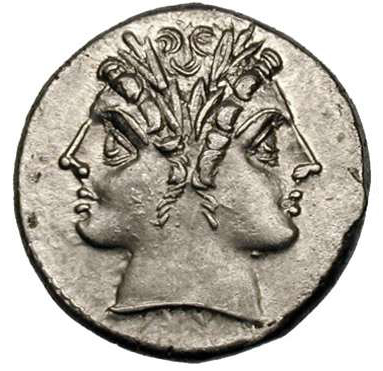
The tradition of making New Year’s resolutions goes all the way back to ancient Rome. In 46 B.C., Julius Caesar developed a new calendar and named the first month of the year after Janus, the god of beginnings and endings.
Janus has always been depicted with two faces, one on the back of his head that allowed him to look into the past and one on the front of his head that allowed him to look into the future. At midnight on December 31st, the Romans imagined him looking back at the old year and looking forward to the new year. Therefore, he became the symbol of the resolutions made on the first day of each year when Romans asked their enemies for forgiveness.
In more modern times, New Year’s Eve is still an occasion for reflecting on the past year and looking forward to a fresh start. It is the time we are more apt to think about the changes we want (or need) to make and resolve to follow through on those changes. In fact, this frame of mind seems to permeate the whole month of January and provides the perfect opportunity to meet with your clients to discuss their financial and life goals. These important and timely conversations will not only lead to wiser financial decisions, but greater and lasting happiness as well.
As a result, I believe that all financial planners are in the position to be “choice architects” for their clients. This term was first introduced to me in the book Nudge written by well know behavioral economist Richard Thaler and his colleague Cass Sunstein. They wrote, “A choice architect has the responsibility for organizing the context in which people make decisions.“ The authors further explain that good choice architecture does not interfere with free choice, but clearly lays out options to assist individuals in making decisions that will benefit them the most. In other words, good choice architecture helps to “nudge” people in the right direction.
... all financial planners are in the position to be “choice architects” for their clients. Click To TweetFor example, there is a growing body of research that has identified what types of purchases will give your clients the biggest bang for their bucks. The truth is—money can buy happiness, if spent on the right things. Based on mounting empirical evidence, Dr. Sonya Lyubomirsky, a leading happiness researcher, describes the types of expenditures most likely to increase life satisfaction:
- Activities that will help us to grow as individuals, strengthen our connection with others, and/or contribute to the well-being of our communities.
- Experiences that will provide lasting memories (such as a rock climbing expedition, a wine tasting tour with friends, or a destination family reunion) rather than material possessions.
- Many small pleasures (such as regular massages, a weekly delivery of fresh flowers, or frequent lunches with a best friend) rather than on one big-ticket item like a new car or super sized flat-screen TV.
- Purchases that represent something that you have worked very hard to earn or to achieve will make the item or experience seem all the more valuable and rewarding. In addition, scholars have found that anticipation increases happiness.
Most importantly, Lyubomirsky reminds us that happiness is a choice: “We can choose to become never-satisfied janitors of our possessions, or we can use our money in ways that improve our worlds and, as a bonus, supply us with genuine and lasting well-being.” As trusted advisors, you have the opportunity and responsibility to pass this wise counsel along to your clients.
Therefore, when you meet with your clients to discuss their 2018 goals, help them to reflect on what is most important to them, and guide them in making financial goals and spending decisions that will contribute the most to their happiness and life satisfaction. The ancient tradition of setting New Year’s Resolutions is symbolic of fresh beginnings and unlimited possibilities. Use this time to guide your clients in establishing meaningful goals, and adopting strategies for honoring those commitments.
- Carol Anderson
